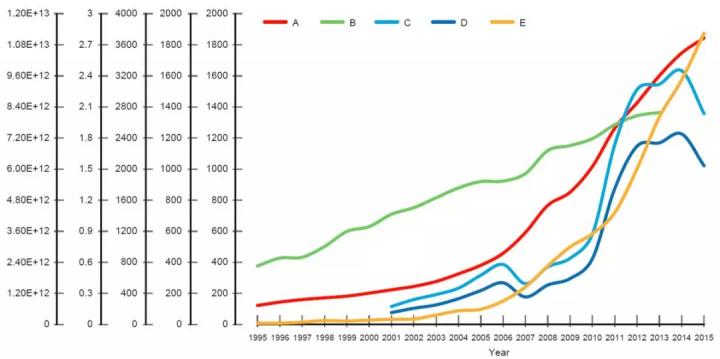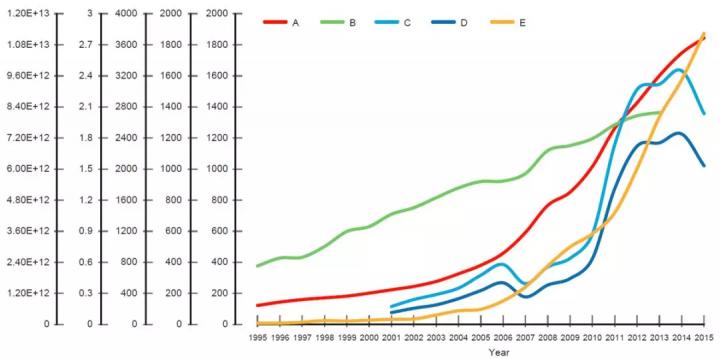
Credit: ©Science China Press
In the period of 1995 to 2015, China has seen remarkable progress in diabetes research, according to a study recently published by SCIENCE CHINA Life Sciences.
During the past two decades when China has experienced unprecedented economic growth, non-communicable diseases, such as diabetes, have gained epidemic proportions as well, potentially owing to the combination of increased life expectancy and unhealthy lifestyles. The prevalence of diabetes has increased dramatically from 0.67% in 1980 to 2.51% in 1994 and to 10.9% in 2013; which has seen China rising to have the largest number of diabetes patients worldwide. This number continues to grow and puts ongoing strains on the medical resources. Therefore, there is an urgent need to stop the diabetes epidemic and slow down the progression to diabetic complications.
A research group led by Jianping Weng at The Third Affiliated Hospital of Sun Yat-sen University in Guangzhou reviewed all diabetes research studies conducted in China between 1995 and 2015, and scrutinized the publication number, publication influence, progress, and unmet demands of diabetes research in China.
According to the bibliometric analysis in the study, diabetes research in China has progressed remarkably over the past two decades. Consistent with the rapid growth in China's Gross Domestic Product (GDP), scientific research funds have all been surging during the same period. The increase in the investment in science has contributed to the tremendous growth in the number of diabetes publications (Figure 1). The progress can not only be identified in quantity, but in publication influence when analyzing by journal distribution, by citation number and by publications cited by the guidelines as well. The total citation number and citation number per publication of diabetes publications especially, has been on the rise in the past two decades; moreover, this trend is predicted to persist at least until 2020 (Figure 2 and 3).
The deep review of this study highlights important findings of clinical research, basic research and traditional Chinese medicine (TCM). A total of 3,524 papers are identified as clinical research papers, most of which are on type 2 diabetes mellitus (T2DM). These papers have clarified our understanding of the epidemiological pattern, time trends, and glycemic control rate in T2DM patients in China. Innovative studies, such as those on the prevention of T2DM with lifestyle interventions, those on the treatment of T2DM with short-term intensive insulin therapy and those exploring the potential future role of gut microbial markers and miRNAs in T2DM pathology and diagnosis, have established milestones in both diabetes research and clinical practice. Total 4,628 basic studies are identified, which outstrips the number for clinical research, indicating that more basic research studies in this field were conducted in China. Among basic research papers, 3/4 are related to pharmacology and therapeutics. Metabolism, genetics/genomes/proteomics/metabolomics, and complications are the three other areas of focus. Total 374 papers are associated with TCM?among which, 332 are related to herbal medicine while 15 are regarding acupuncture. More than 200 herbs or compound formulae (Fufang) were studied. Berberine, Astragali radix (Huang qi), and Lycium bararu (Gou qi) are the three most commonly studied herbs. The citation metrics of TCM are slightly superior to those of all papers in the field of diabetes, suggesting that TCM studies attract more attention than the average in the field of diabetes.
According to the authors, these advancements mentioned above, however, struggled to adequately manage the fast-rising diabetes epidemic in China. Furthermore, halting the rise of the diabetes epidemic and developing a cure for diabetes seem unlikely in the near future. Therefore, the authors addressed opportunities to strengthen researches, including new drug development, high quality studies on health economics, and healthcare quality improvement studies. The enhancement of applied clinical research, such as lifestyle interventions and complications prevention and treatment, conducted throughout the different stages of the disease (diabetes susceptibility, pre-diabetes, diabetes, and diabetic complication), is of great significance. As the era of artificial intelligence is approaching by leaps and bounds, a new perspective of thinking on diabetes is to be summoned for China when it comes to tackling such a huge number of patients, especially thus far there has been no sign for the tipping point of diabetes epidemic.
"Scientific advancements can invigorate the clinical practice, double the efficiency, and lead to the implementation of related policies that impact the entire country." said Professor Jianping Weng, the corresponding author of the study and past president of the Chinese Diabetes Society. "This study was conducted with the aim of gaining new insights regarding current scenario and future scope for researchers, healthcare providers in the field of diabetes, and the respective policy makers."
###
This research was funded by the National Key Research and Development Program of China grant and National Health and Family Planning Commission Foundation for Public Welfare Industry Research Project.
See the article:
Wu, Z., Jin, T., and Weng, J. (2018). A thorough analysis of diabetes research in China from 1995 to 2015: current scenario and future scope. Sci China Life Sci 61, https://doi.org/10.1007/s11427-018-9377-y
http://engine.scichina.com/publisher/scp/journal/SCLS/doi/10.1007/s11427-018-9377-y?slug=full%20text
Media Contact
WENG Jianping
[email protected]
http://www.scichina.com/
Related Journal Article
http://dx.doi.org/10.1007/s11427-018-9377-y





